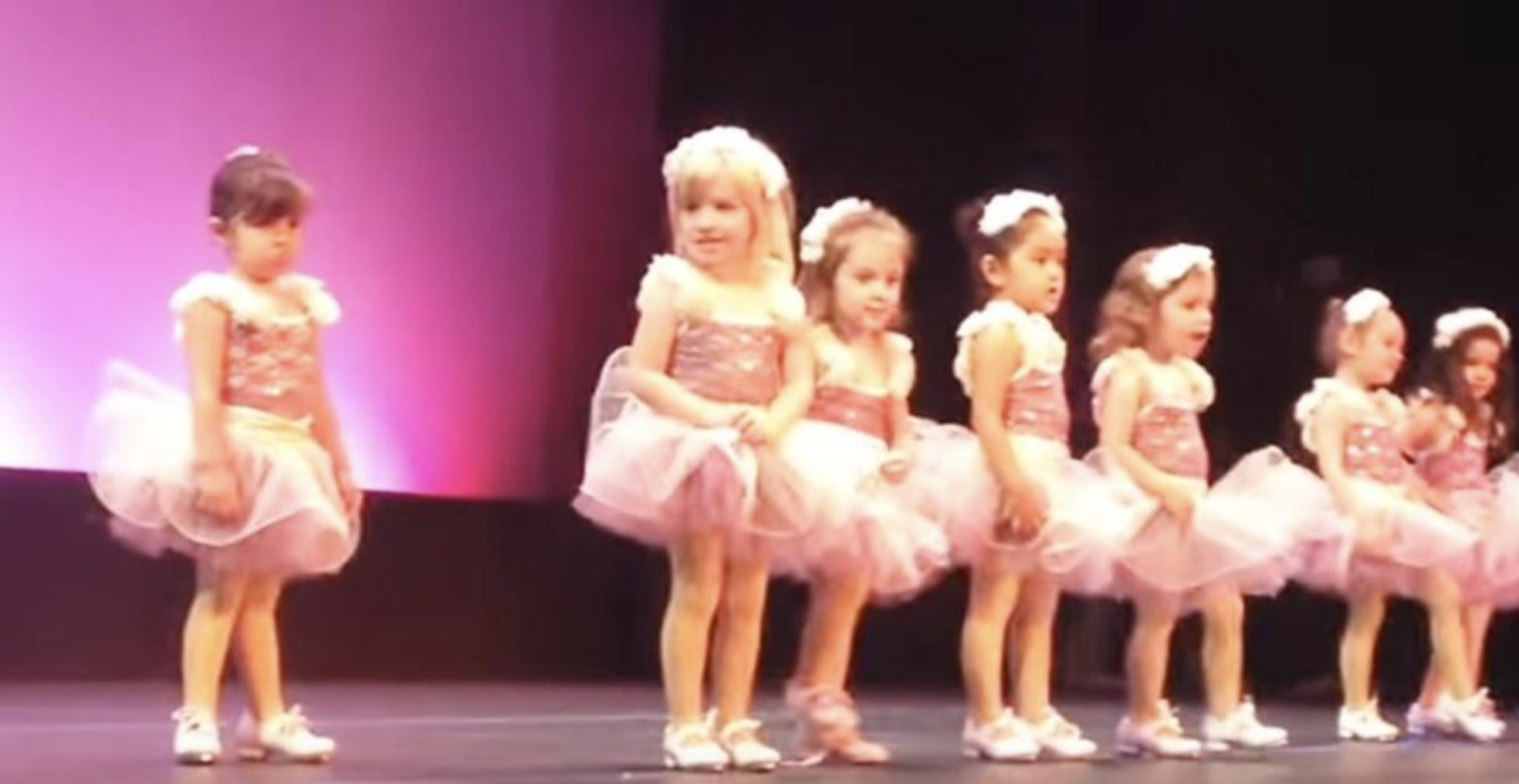Life can be difficult when you’re a toddler — especially when you’re expected to get up in front of a large crowd of people and perform.
One little girl knows exactly how this goes. Back in 2015, the then 2-year-old child was forced to get up on stage with her fellow ballerinas and perform a dancing routine. She was none-too-pleased about it until she spotted someone she knew in the audience filming her.
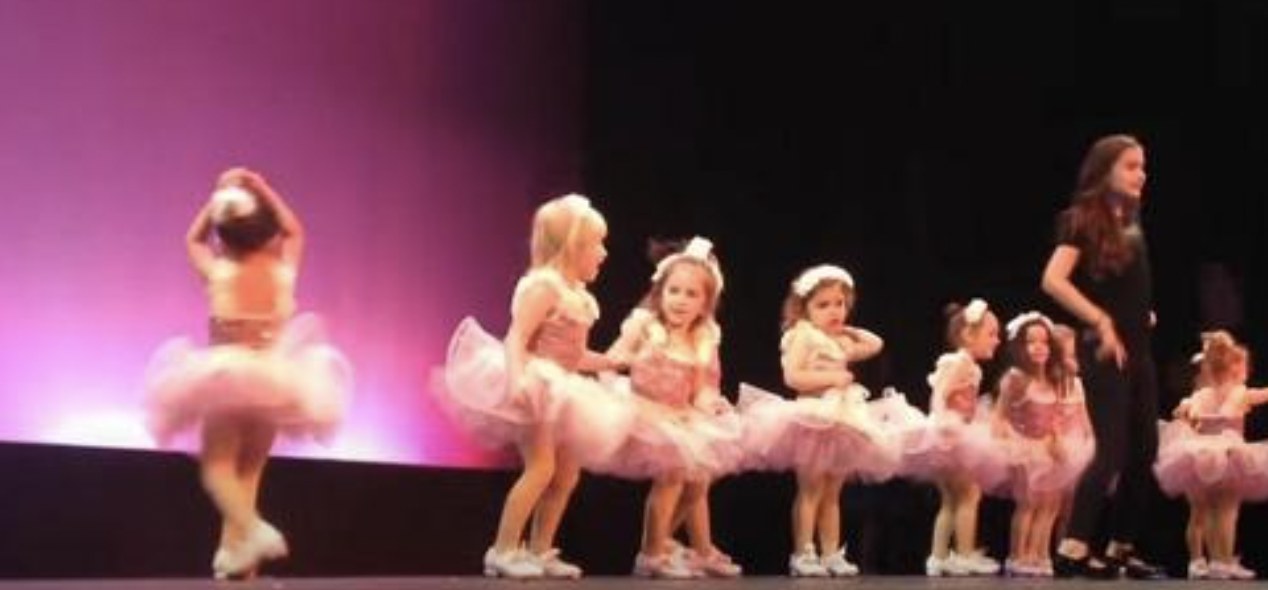
Life can be difficult when you’re a toddler — especially when you’re expected to get up in front of a large crowd of people and perform.
One little girl knows exactly how this goes. Back in 2015, the then 2-year-old child was forced to get up on stage with her fellow ballerinas and perform a dancing routine. She was none-too-pleased about it until she spotted someone she knew in the audience filming her.
Be sure to reach the end of this article to see the full video 🙂

The little girl certainly wasn’t thrilled as we can plainly see. Still, we’re so glad that the entire performance was caught on video so that it could be shared with the world!
At the start of the video, the little girl is already less-than-thrilled to be up on the stage. The dance teacher is moving among the kids, helping them understand what they are supposed to be doing, but the toddler is standing away from the rest.
apost.com
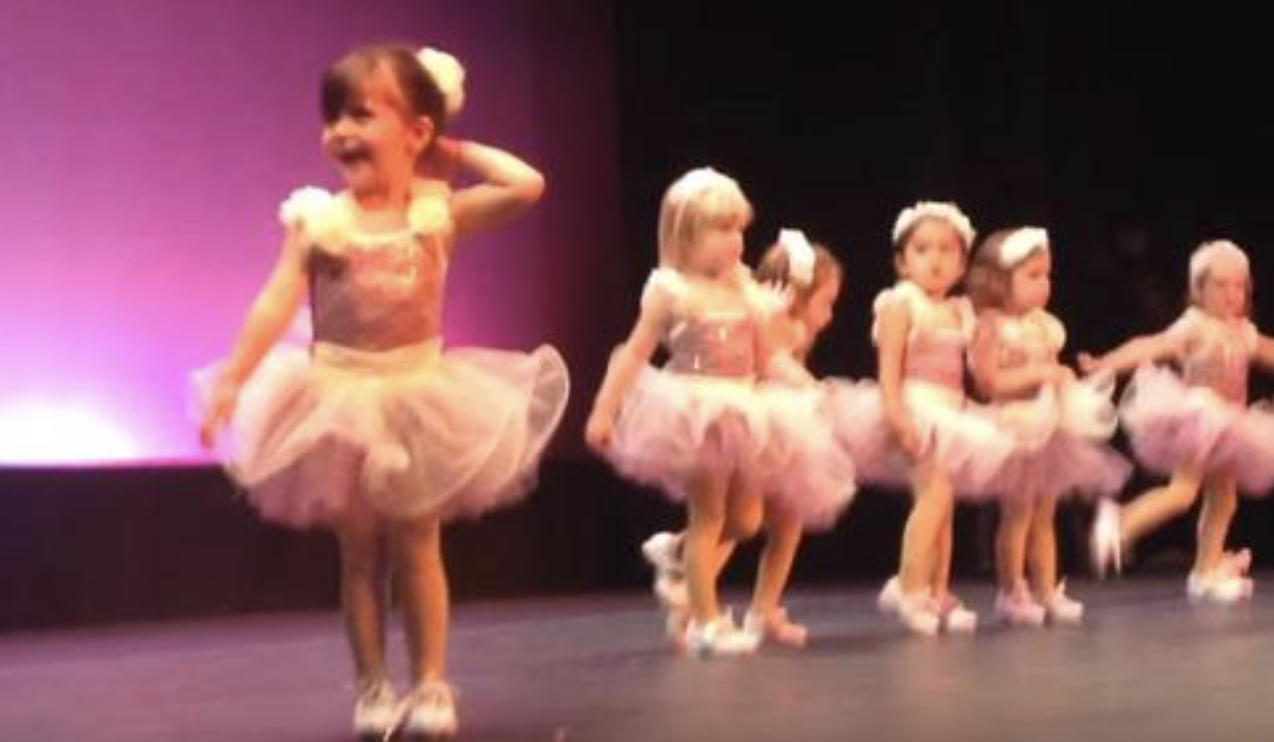
The little girl is standing far away from the rest of the group and looks utterly disinterested. The dancer standing next to her glances over, giving her looks of uncertainty.
Suddenly, the girl spots someone in the audience and that frown instantly turns upside down! She begins to wave excitedly and runs toward them, leaving the other dancers in total confusion as they watch her making her escape.
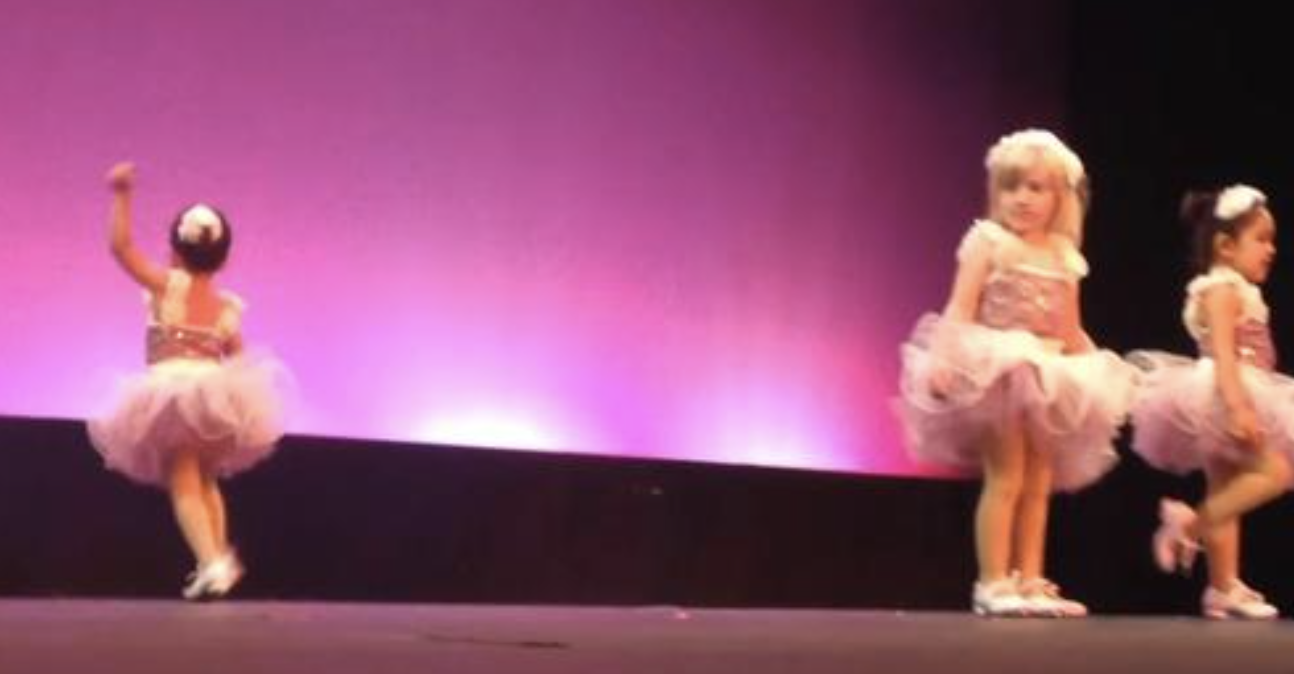
Someone reaches from behind the curtain and grabs her hand, jerking her back. Holding hands with the unknown character behind the curtain, the little girl continues to smile and then starts to perform the dance moves right along with the rest of her friends.
Thinking that things are going to be okay, the child is released. Bad move! She takes off across the stage suddenly spinning, turning and improvising — giving a performance like no other!
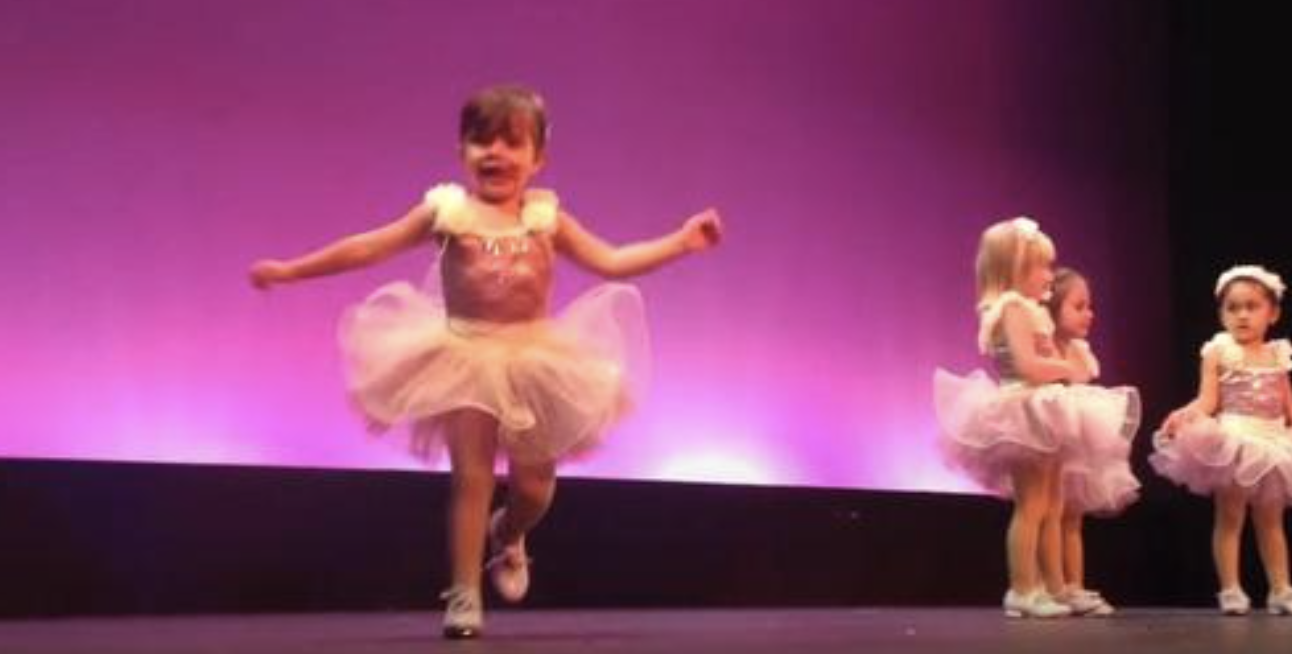
And the response on YouTube has been massive for this relatively normal, two-minute clip. Since Thais Caproni uploaded it in 2015, it has received more than 200,000 views, 1,000 likes and dozens of enthusiastic comments. In one of the top-rated comments, Kathleen Horn writes, “A star is born. She has her own style of tap dance. Could grow up to be a choreographer.”
Another user chimed in by writing, “She was doing her own Princess things. :)”
While many — if not most — of the comments are positive, there are a few highly rated critiques that are less about this 2-year-old child’s killer dance moves and more about the dance instructor. Viewers objected to the fact that the dance instructor or leader, a young girl, performed with the young children on-stage.

“What kind of bogus dance academy has a teenage teacher on stage leading the group?” one commenter questioned.
With that said, the majority of the comments are positive, many of which complimented the creative 2-year-old tap dancer on her impromptu “solo.” Regardless of this young girl’s skill as a tap dancer, experts point out that dancing is an excellent pastime during early childhood. According to the National Dance Education Organization (NDEO), a non-profit group that promotes dance education across the country, dance offers several important benefits beyond just exercise.
What makes dance a unique art form, for example, is that it is pre-verbal. While poetry can no doubt be beautiful, inspiring and enriching for children, the 2-year-old in this video is likely too young to write and recite her own poetry. On the other hand, children can express themselves through dance at a very young age.

“Dance embodies one of our most primal relationships to the universe. It is pre-verbal, beginning before words can be formed. It is innate in children before they possess command over language and is evoked when thoughts or emotions are too powerful for words to contain,” the NDEO writes on their website.
One of the number one benefits of dance during early childhood is that it provides children a non-verbal outlet to express their emotional experience. The NDEO further argues that this helps children achieve “psychological health and maturity.” In the organization’s words, dance “offers a structured outlet for physical release while gaining awareness and appreciation of oneself and others.”
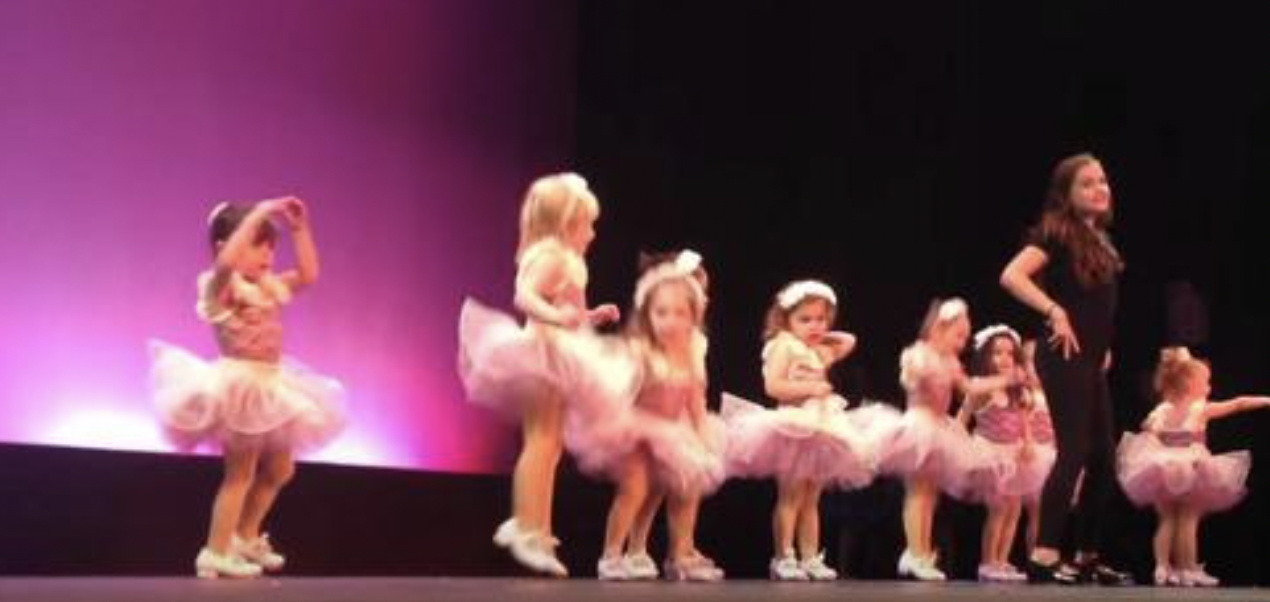
Surprisingly, dance can also help with a child’s cognitive development, according to the NDEO. The organization claims that dance can help children frame ideas, problems, and solutions in terms of movement. In turn, dancers then develop a movement-based understanding of problem-solving in which there is a “cognitive loop between the idea, problem, or intent and the outcome or solution.”
If that seems too abstract, there are some more concrete benefits to dance, including promoting social awareness and aiding in a child’s physical development. Anyone who has ever danced in a dance troupe knows that cooperation and group communication skills are essential. Imagine how beneficial that might be at a young age. The toddlers in the video below are having to learn how to work in a group at just 2 years old! Of course, dance’s most obvious benefit is that it, like any sport, helps with physical development, including skills like balance and coordination.

And folks at the NDEO aren’t the only people advocating for dance education. In a 2018 TED-Ed blog, Ken Robinson and Lou Aronica argue that dance is “just as important as math in school.” Robinson and Aronica’s piece even provides data to back that claim up. In one study, for example, 95% of teachers found that students’ abilities to cooperate and collaborate improved after groups danced together.
Of course, one aspect that Robinson, Aronica, and the NDEO fail to address is all the adorable videos that come out of teaching dance to young children. And we have proof! Even if it turns out that this little 2-year-old soloist doesn’t come away from her dance performance with any group communication skills, at least she and her family will have this video, which is a cute overload, to say the least. Either way, the bottom line is that dance — for a variety of reasons — is important.
Please SHARE this with your friends and family.
